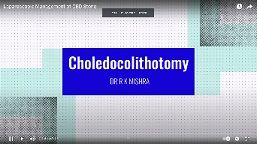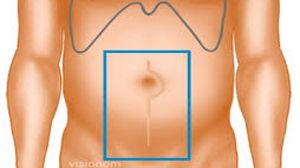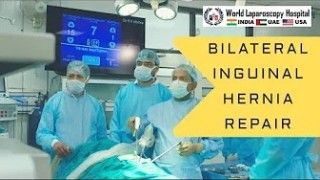Total Laparoscopic Hysterectomy without Uterine Manipulator
Add to
Share
233 views
Report
2 months ago
Description
Total Laparoscopic Hysterectomy (TLH) is a minimally invasive surgical procedure performed to remove the uterus entirely, often indicated for conditions such as fibroids, adenomyosis, abnormal uterine bleeding, and certain precancerous or early-stage malignant conditions. Traditionally, TLH is facilitated by the use of a uterine manipulator, which allows for uterine mobilization, better visualization, and safer dissection of surrounding structures. However, advances in laparoscopic techniques have made it possible to perform TLH without the use of a uterine manipulator, offering several unique advantages. Rationale for Avoiding a Uterine Manipulator While uterine manipulators are helpful, they are associated with certain limitations and risks: Potential uterine perforation or injury to adjacent organs such as the bladder or bowel. Increased cost and need for specialized instruments. Limitations in patients with cervical stenosis, large fibroids, or anatomical variations. Performing TLH without a manipulator requires meticulous surgical planning and advanced laparoscopic skills but avoids these complications and expands the eligibility for laparoscopic hysterectomy in complex cases. Surgical Technique Highlights Patient Positioning: The patient is placed in a lithotomy position with Trendelenburg tilt to allow optimal visualization of the pelvis. Port Placement: Standard laparoscopic ports are placed—usually one umbilical camera port and three accessory ports in the lower abdomen. Uterine Mobilization: Without a manipulator, the surgeon uses laparoscopic graspers and energy devices to manipulate and mobilize the uterus safely. Dissection: Key steps include careful skeletonization of the uterine vessels, separation of the bladder, and safe dissection of the uterosacral and cardinal ligaments. Hemostasis: Advanced bipolar or ultrasonic energy devices ensure secure vessel sealing and minimal blood loss. Uterine Removal: The uterus can be removed vaginally or morcellated laparoscopically, depending on size and pathology. Closure: The vaginal cuff is sutured laparoscopically using absorbable sutures, maintaining anatomical integrity and minimizing postoperative complications. Advantages of TLH without a Uterine Manipulator Reduced risk of uterine or cervical injury. Feasible in patients with distorted anatomy or large uteri. Lower cost due to avoidance of specialized manipulators. Decreased risk of uterine perforation and vaginal trauma. Challenges and Considerations Requires higher laparoscopic skill and experience. Limited uterine mobility can make visualization more challenging. Surgeons must carefully balance traction, counter-traction, and instrument placement to safely complete the procedure. Conclusion Total Laparoscopic Hysterectomy without a uterine manipulator is a safe, effective, and innovative approach in minimally invasive gynecologic surgery. With meticulous surgical technique, proper patient selection, and advanced laparoscopic expertise, this procedure can provide excellent outcomes, shorter recovery, and fewer complications, making it a valuable option for modern gynecologic surgeons.
Similar Videos






